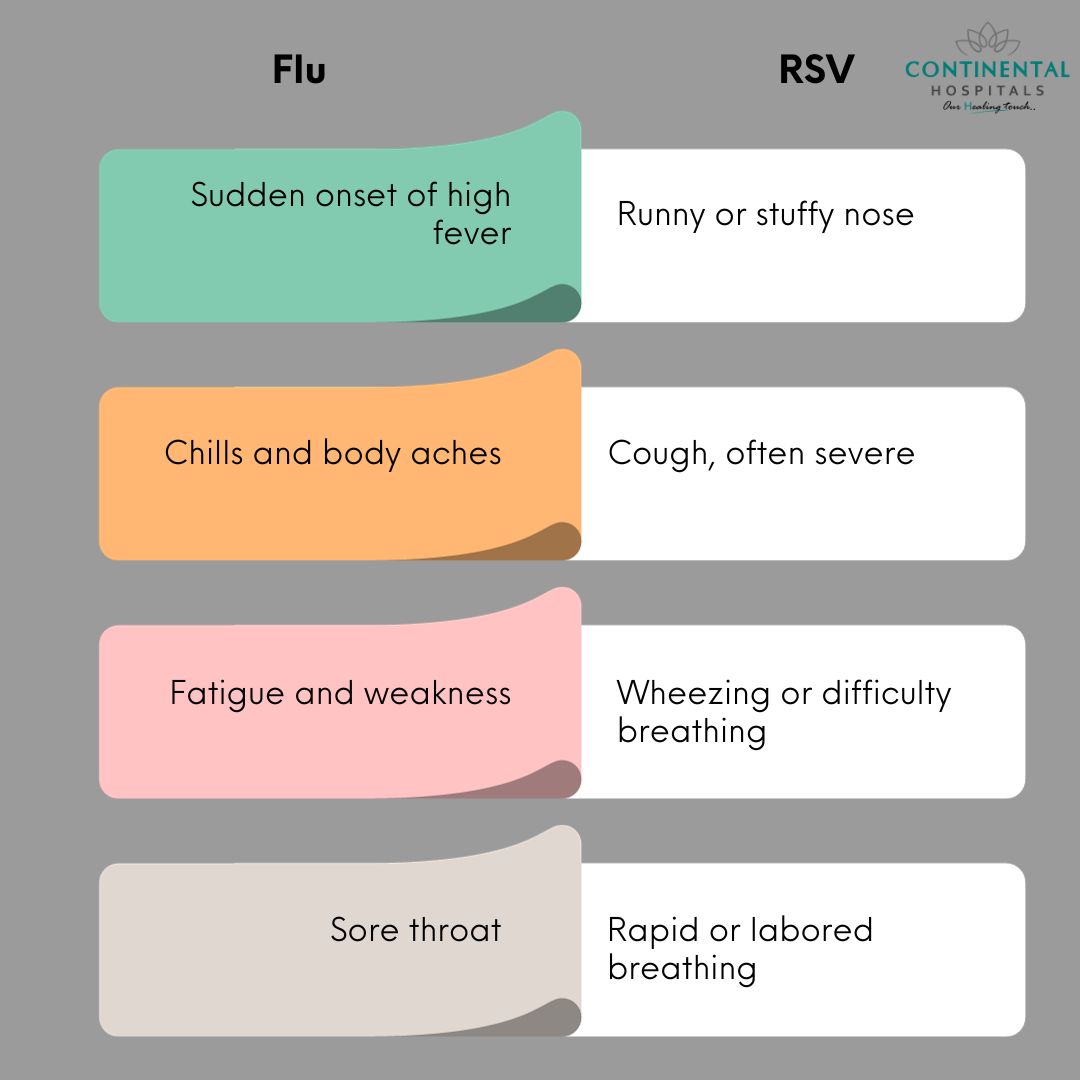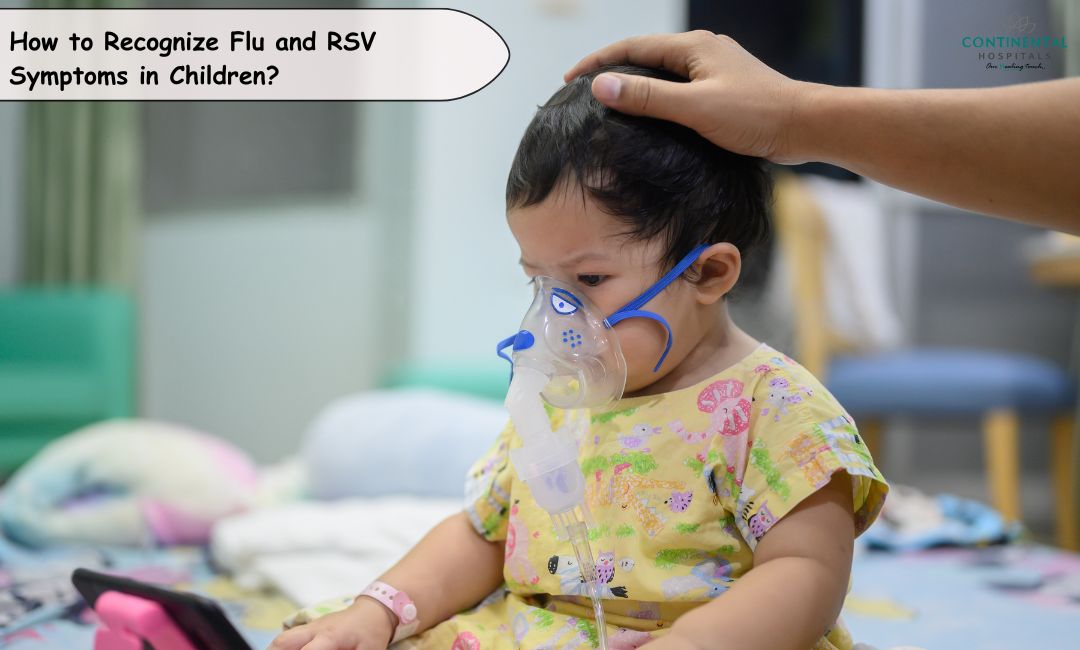As a parent, it's essential to be vigilant about your child's health, especially during cold and flu seasons. Understanding the signs and symptoms of common respiratory infections like the flu (influenza) and RSV (respiratory syncytial virus) can help you take timely action and seek appropriate medical care.
Understanding the Flu and RSV
Influenza (Flu):
Influenza (Flu) is a contagious respiratory illness caused by influenza viruses that infect the nose, throat, and sometimes the lungs, leading to symptoms such as fever, cough, sore throat, body aches, fatigue, and in severe cases, complications like pneumonia.
Cause: Influenza viruses primarily belong to types A, B, and C. Influenza A and B viruses are the ones responsible for seasonal flu outbreaks.
🥗 Healthy Plate Challenge
🍽 Add Your Favorite Dish
Pick Your 6 favorite foods, eat, and see the results.Drag & drop foods onto your plate.
Drop Food Here
Transmission: It spreads mainly through droplets when an infected person coughs, sneezes, or talks. Touching contaminated surfaces and then touching the face can also lead to transmission.
Severity: Influenza can cause mild to severe illness and can lead to hospitalizations and even death, especially in high-risk populations like young children, elderly individuals, pregnant women, and people with certain underlying health conditions.
Prevention: Vaccination is the most effective way to prevent flu. Good hygiene practices like handwashing, avoiding close contact with sick individuals, and covering your mouth when coughing or sneezing also help prevent its spread.
Respiratory Syncytial Virus (RSV):
Transmission: RSV spreads through respiratory droplets when an infected person coughs or sneezes. It can also live on surfaces and objects, contributing to transmission when a person touches these contaminated surfaces and then touches their face.
Severity: RSV can be especially severe in infants, older adults, and individuals with weakened immune systems. It's a common cause of bronchiolitis and pneumonia in babies.
Prevention: There is no specific vaccine available for RSV, but measures such as good hand hygiene, avoiding close contact with sick individuals, and cleaning and disinfecting frequently touched surfaces can help prevent its spread.

Consult a GENERAL PHYSICIAN if your infant develops severe symptoms associated with the flu or RSV.
How to Recognize Flu and RSV Symptoms in Children?
Influenza (Flu) Symptoms in Children:
- Fever: Typically high (above 100.4°F or 38°C), sudden onset.
- Cough: Often dry and persistent.
- Sore throat: Common, accompanied by difficulty swallowing.
- Runny or stuffy nose: Sometimes present.
- Muscle or body aches: Can be severe, causing discomfort.
- Headache: Common, especially among older children.
- Fatigue: Children may feel extremely tired and weak.
- Vomiting and diarrhea: More common in children than adults.
RSV (Respiratory Syncytial Virus) Symptoms in Children:
- Runny nose: Often the first sign, followed by other symptoms.
- Coughing: Severe, sometimes with wheezing or difficulty breathing.
- Fever: Can be present but usually lower grade than flu.
- Sneezing: Common, accompanied by nasal congestion.
- Difficulty breathing: Especially noticeable in infants and younger children.
- Wheezing: Often heard as a high-pitched sound while breathing.
- Decreased appetite: Children may eat less or have difficulty feeding.
How to Manage Flu and RSV Symptoms in Children?
Prevention:
Vaccination: Encourage getting flu vaccines annually for children aged 6 months and older. Unfortunately, as of my last update in January 2022, there isn't an RSV vaccine widely available, but certain high-risk infants might receive a preventive antibody injection.
Hygiene: Emphasize proper handwashing, covering the mouth when coughing or sneezing, and avoiding close contact with sick individuals to prevent the spread of these viruses.
Environmental Precautions: Keep surfaces clean, especially during flu season. RSV is highly contagious and can survive on surfaces for hours.
Home Care:
Rest: Ensure your child gets plenty of rest to help their body recover.
Hydration: Encourage fluids to prevent dehydration, especially if your child has a fever.
Comfort Measures: Use a cool-mist humidifier to ease breathing difficulties and soothe irritated airways. Saline drops can help with nasal congestion in younger children.
Over-the-counter Medications: Use age-appropriate medications to alleviate symptoms like fever or discomfort. Always consult a pediatrician before giving any medication to children.
Medical Care:
Seek Medical Advice: If your child shows severe symptoms like difficulty breathing, persistent fever, dehydration, or extreme lethargy, seek medical help immediately.
Antiviral Medications: In certain cases, a doctor might prescribe antiviral medications to reduce the severity and duration of flu symptoms, especially if started early in the illness.
Hospitalization: Severe cases of RSV or flu might require hospitalization for monitoring and supportive care, particularly in very young children or those with underlying health conditions.
Follow-Up Care:
Monitoring: Keep an eye on your child's symptoms and health. Monitor their temperature, hydration, and overall well-being.
Follow Doctor's Advice: Adhere to any prescribed treatments or medications as instructed by the doctor.
Isolation: Keep your child away from others to prevent spreading the illness until they are no longer contagious as advised by the healthcare provider.
In conclusion, as a parent, staying informed about the signs, symptoms, prevention, and management of common respiratory infections such as the flu (influenza) and RSV (respiratory syncytial virus) is crucial for safeguarding your child's health. Recognizing the distinct symptoms of each illness, promoting preventive measures, and knowing when to seek medical attention are essential components of proactive care. Encouraging annual flu vaccinations for eligible children and practicing good hygiene habits can significantly reduce the risk of contracting these viruses. Additionally, swift action and close monitoring of symptoms, especially in young children or those with underlying health conditions, can aid in timely medical intervention and appropriate care to mitigate the severity of these infections.
Consult a GENERAL PHYSICIAN if your infant develops severe symptoms associated with the flu or RSV.
Related Blog Articles:
1. Staying Healthy in the Rainy Season
2. Influenza (Flu) in Children
3. Importance of Flu Vaccines: Myth vs. Fact
.webp)














